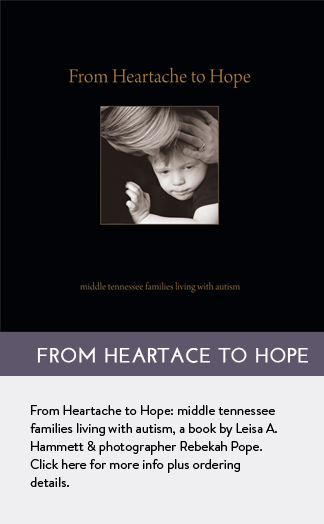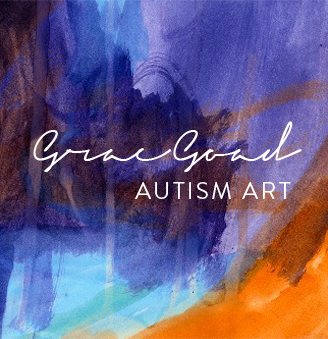Fourteen years after its publication, the general public and autism communities are still talking about science journalist Steve Silberman‘s article, “The Geek Syndrome,” published by the popular Wired magazine. The 2001 article highlights the prevalence of individuals with Asperger’s syndrome in the tech industry. With his newly published book, NeuroTribes, the Legacy of Autism and the Future of Neurodiversity, Silberman explodes what the autism community—both “professionals” and parents—have believed to be truth about the disorder now affecting 1 in 68 children. (CDC)
Yesterday, Silberman’s new book was the subject of National Public Radio (NPR)’s syndicated interview format show, Fresh Air with Terry Gross.
I’m a bit of a wonk about all things autism, having read many books, and attended countless seminars, workshops, and conferences, but what I learned from the Gross-Silberman interview surprised me, informed me, saddened me, encouraged me, and has the ability to change our culture’s way of viewing autism. Pardon me as I attempt, perhaps not without an error or two—hopefully small—to recount here snippets from the interview. I listened to it twice last night, first on the radio and the second time via podcast. Bear with me as I want to share this message quickly and broadly. Or, simply, you can skip to the podcast link and listen for yourself:
Silberman went deep, telling a story that few, if any of us, have heard and propagated. Many know that while American child psychiatrist, Leo Kanner had just recognized and categorized autism—what was then thought of as a childhood psychosis—in Nazi Germany, pediatrician/medical professor Hans Asperger, eponymously named a high-functioning form of autism.
Or, so we thought.
Through author Silberman’s brilliant, extensive five-year book research, he learned that it was Asperger, not contemporary clinicians and the like, who first recognized autism as a spectrum disorder—a continuum of “functioning” levels and abilities. The first time the doctor spoke publicly about autism to Nazi officials, it was as an appeal to not herd children with the disorder into the gas chambers, as was done with children and adults with disAbilities. Adolf Hitler’s regime saw individuals with disAbilities as inferior and burdensome on society. He spoke of what we, in more contemporary times, know as “the little professor syndrome,” putting in the forefront “the higher functioning” children on the spectrum, stating that they would be good coders for the war someday. Asperger eventually suspended his research as he was recruited for the war effort.
Meanwhile, Kanner—probably America’s first child psychiatrist and the only one diagnosing the disorder—was deliberately limiting numbers of those labeled with autism. He turned away patients referred to by other physicians, as his definition was limited only to the more severe end of the spectrum. He also was the first to label mothers of children with autism as “cold” and the cause of their children’s autism, which he did mid-1940s. History has taught it was historically despised psychiatrist Bruno Bettleheim’s that manufactured this cruel theory. However, Bettleheim did make a career out of psychoanalyzing the “Refrigerator Mothers” and loudly pontificating about it. This era of blaming mothers, which continued through the 1970s, brought great emotional pain and suffering to families, and was largely extinguished through work of a now deceased and well-known American research psychologist. Bernard Rimland was himself a father of a son with autism—exceptional artist Mark Rimland. But more about “Bernie” in a moment.
So, Nazi Germany suspended what could have been a greater awareness, all these decades later, of how BROAD is the spectrum, making us largely dependent on only Hans Asperger’s high functioning model and Kanner’s limited, more severe diagnosis.
First, it’s heartbreaking that too much of our culture still sees disAbility as burdensome and unworthy. Period. Secondly, Asperger’s research was beginning to detail the breadth of gifts in this odd and other way of being. What did and have we missed by a cruel edit of history?! Yet, another legacy of Hitler.
By the 60s and 70s Rimland was asserting, thankfully, that Bettleheim’s half-cocked theory was definitively false, and that autism was not psychogenic. Rimland helped co-found what became known as the Autism Society of America. His founding partner was beloved autism activist, 91-year-old Ruth Christ Sullivan, Ph.D. Sullivan is also mother of Joseph Sullivan, one of the savants who served as “models” for actor Dustin Hoffman’s portrayal in Rainman. The film, too, was revolutionary for parents living with this strange and unknown disorder, as suddenly, the general public had a media reference point. Successive generations then had to explain to the curious who asked that no, not every child with autism is a savant like Rainman.
Sullivan and Rimland sought to bring awareness and promote the gifts of individuals with autism. But, again, history redirected the story.
Enter, also beloved, English psychiatrist Lorna Wing, herself “a parent,” (of a child on the spectrum). Wing, who died last year, learned of Asperger’s buried and broader definition of autism and went in search of uncounted individuals with the disorder living in London, proving the incidence was much, much larger. This ushered in a largely, unknown, quiet shift in the late 80s, where numbers for autism suddenly catapulted from 1 in 10,000 to 1 in 1,000. This was just about a decade from the time when my daughter was diagnosed, in 1997. We knew then, something was off with the enormous jump in numbers. In her 18 years with the known diagnosis, we witnessed the incidence numbers skyrocket from 1 in 1,000 to frequent and alarming reports of increase, which eventually escalated to the current *official* number. Even the CDC says, according to an unofficial telephone poll, that the rates are more likely one in 50 children aged eight and under.
Neither parents nor the media were cognizant that the numbers suddenly exploded into epidemic proportions because the definitions has been based on Kanner’s findings and not Asperger’s broader definistion. And most clinicians were unaware of this reason, as well. Also, Hans Asperger’s “high functioning” segment wasn’t recognized and thus diagnosed in America until the 80s. But, it’s still not that simple.
The conversation changed.
The parent awareness-positivity movement was thwarted by parents alarmed that autism incidence was directly due to Dr. Andrew Wakefield, MD’s theories that the MMR vaccine caused autism. (Keep reading. Hold on, please.)
Much of the dominant parent tenor was anger and backlash to Big Pharma/vaccine manufacturers, as it was also believed that thimerosal, a form of mercury, (once found in all US vaccines) was also causative. (C’mon. Hang with me here.) Likewise, geneticists and clinicians began concentrating on other causatives. The human genome was unraveled and over time, the numbers of genes that were found to be playing a role of autism went from five, to 10, to 15, to 25, to 50 to 100…and, I lost count long ago.
Autism either became “a thief that came in a stole my son during the night, ” which were the words I read by an angry-cure-seeking parent blogger long ago, or a grant-generating source of income for scientists. Now, ya’ll hang on, too. I know no one got rich off of research and I’m grateful for the research. And, as for those parents, Silberman, himself, validates the reasons they assumed that vaccines were causative.
And, just because his findings unearth that it has been, all along, a more minor theory of undiagnosed and uncounted numbers, Silberman himself advocates for the long-standing (as of the last decade-and-a-half) that environmental factors play a role, as well. And, the environment, too, is a spectrum—from toxic exposures to the biological-chemical environment of the womb, or a father’s age.
So, we are back to the old adage: if you’ve seen one person with autism, you’ve seen one person with autism. So goes the genetics and the environmental causatives.
And, about those vaccines, I rarely speak aloud my views and I still won’t fully here. But I will say, I do not damn Wakefield. He was on to something. But he made some questionable business deals and he was slain on the cross of the American Sacred Cow—Big Pharma’s vaccine industry. I am friends with one of the country’s leading research scientists, and like others, he will whisper privately, that there could be causative issues for some individuals with certain substances contained in vaccines. Do you know what’s in vaccines? Google it if you do not. And, while she may have helped portray autism parents as ill-informed idiots, Hollywood actress Jenny McCarthy, was correct, our vaccines need to be greener and cleaner, at least.
Nearly decades ago biomedical physicians dedicated to helping our population were ignored for espousing connections between gut health and numerous, problematic factors about the autistic immune system. Such as that they are impaired so that their metabolic systems often cannot withstand the daily assault of environmental toxins to which we are all exposed. Currently, my daughter is being treated by a psychiatrist. Such physicians are traditionally, more allopathic and less integrative in their approaches to medicine. In the conferences she attends, her contemporaries are addressing these metabolic breakdowns that are happening due to toxins.
Progress. is. slow.
Now, please be clear, I do not believe vaccines cause autism. Trigger? Maybe. But first, in the majority of cases, there’s got to be a set of vulnerable genes and perhaps other complicating factors that provide fuel to that potential flame. And here we go again, derailing the conversation.
So, I go back to this brilliant author, whom I cannot wait to meet, applaud, and hear speak, sometime somewhere because he has revolutionized the conversation and hopefully brought our awareness back to where it could have been. It is time, Silberman said, to divert some of that money going into causatives and genes to helping people live independently and full lives. Hello!?! You, know. Like we all want to live. And, like the race I am running against the clock that will run out at my daughter’s final school year this coming May, when all her public school services end. Here. In Tennessee. Where she has been on the waiting list with 7,000 others only with intellectual disAbilities as the qualifying right to be on the list, leaving thousands of others ineligible to be on a list for services. Last year, our red state legislature, moved to enact a ruling that would allow individuals still on the list when their parents turn 80, to begin receiving the Waiver services. Given the trajectory of the minute few who come off the list each year, it could be age 80, for many of us, before our sons and daughter receive federal matched state funded services for our sons and daughters with disAbilities.
So, if you’re passionate about art, disAbilities, or nonprofits, I’ve got a job for you. My answer, my contribution is Art Tank. I am the founder and creative director. I need a business partner to help me launch this nonprofit social enterprise. It will not provide, at least in the beginning stages, the 24/7 care that my daughter and many others with disAbilities need, but it will provide an *inclusive* environment for artists with disAbilties to create, exhibit, and sell their work. That’s meaningful contribution, recognizing and utilizing gifts for income, (and tax payer contribution). Again, something we all want in our lives, but rarely achieved by people with more involved forms of disAbility.
Let’s write the next chapter of autism.
xo
Disclosure: last night’s Fresh Air interview Silberman was the sole impetus for this blog post. Given that this blog has an affiliate link to Amazon, I will receive a minute portion of any sales generated through clicks through to the links of Silberman’s book, NeuroTribes. Income generation has never been the motivation for this blog, but rather autism and art awareness, contemplative writing, and promotion of my own published works. I appreciate your reading and patronage in whatever form.






Leisa:
Thanks so much! I really appreciate it. The only correction I would ask you to make is that Kanner did not “buy into” Bettelheim’s “refrigerator mother” theory — Kanner himself proposed the theory in the mid-1940s, and Bettelheim built a career out of it. Thanks!
Steve, so good to hear from you and so quickly. Tweet-tweet! I’ve gladly made these changes. And…again, I learned something. Wow. I had never heard Kanner was the origin of cold mothers, only that Bruno was the author.
Thank you! That’s one of the corrections to widely accepted history that I make in my book. Thanks!
And, I’ve already gotten some beating for summarizing the interview. Be prepared. Our community can be relentless if you don’t take their exact belief/version. Sigh.
I listened to the interview on the way to do my radio show on Wednesday morning. It was a fantastic interview. He was a radio host’s dream guest, very informative and very interesting. I had to race in to get my show started, because I didn’t want to stop listening!
Yes, it was! Thank you for commenting, Ingrid!
Leisa, thank you for this post. As the mom of a wonderful boy with Asperger’s Syndrome, I’m eager to listen to this program and appreciate your summary of it. Keep going. Keep speaking. The more we learn and support one another, the better. So grateful.
Awww, Jennifer. I hope you listened, enjoyed, and learned. Thank you for your kind words.
Leisa,

I love the way you write disAbility. It jumps out at me every time I read it and gives me so much to think about. I hope you find the perfect person to join you on your mission.
xoxox,
Brenda
1010ParkPlace recently posted…Win a Copy of Makeup Wakeup
Ahh, Brenda. So lovely, your comment. Like you. Thank you. xo
“The cold mother theory” oh yes.

as a woman who was born in the 1950’s, adopted, and obviously had balance and spatial problems—and a temper by age 9 because I didn’t have the language to express what was wrong and wouldn’t for many years, it angers me beyond words that this theory was expanded to include all adopted children.
So much time wasted in therapy because the therapist insisted I had to hate my parents and me screaming that I loved them.
I look forward to hearing more about your project and am so sorry that there aren’t services for your daughter when she ages out. But everyone knows any problem just goes away…..
pia recently posted…Sleeping Beauties
Wow. I had not known that that cruel theory was expanded to include adoptees. What torture you describe. UGH. Thank you for sharing and your interest, Pia.
I hardly have a reason to drive anymore, so unfortunately, I miss a lot of NPR interviews I used to listen to during my commute. However, today,I had the good fortune to be able to catch part of the interview you have reported on during a short ride to the supermarket. Unfortunately, it was mostly the part about the Nazi atrocities. So, thank you for taking the time to write this blog post summarizing what I missed.

Suzanne Fluhr recently posted…Philadelphia Phreak Out – Popeapocalypse Now
Ahh, Suzanne, I know what you mean. But I have Public Radio blaring on my smart phone, ipad, or laptop at least twice a day. I am in the kitchen cooking or cleaning up, if not in my car, during Terry Gross. Thank you for taking the time to read my post and for your kind words. Best to you.